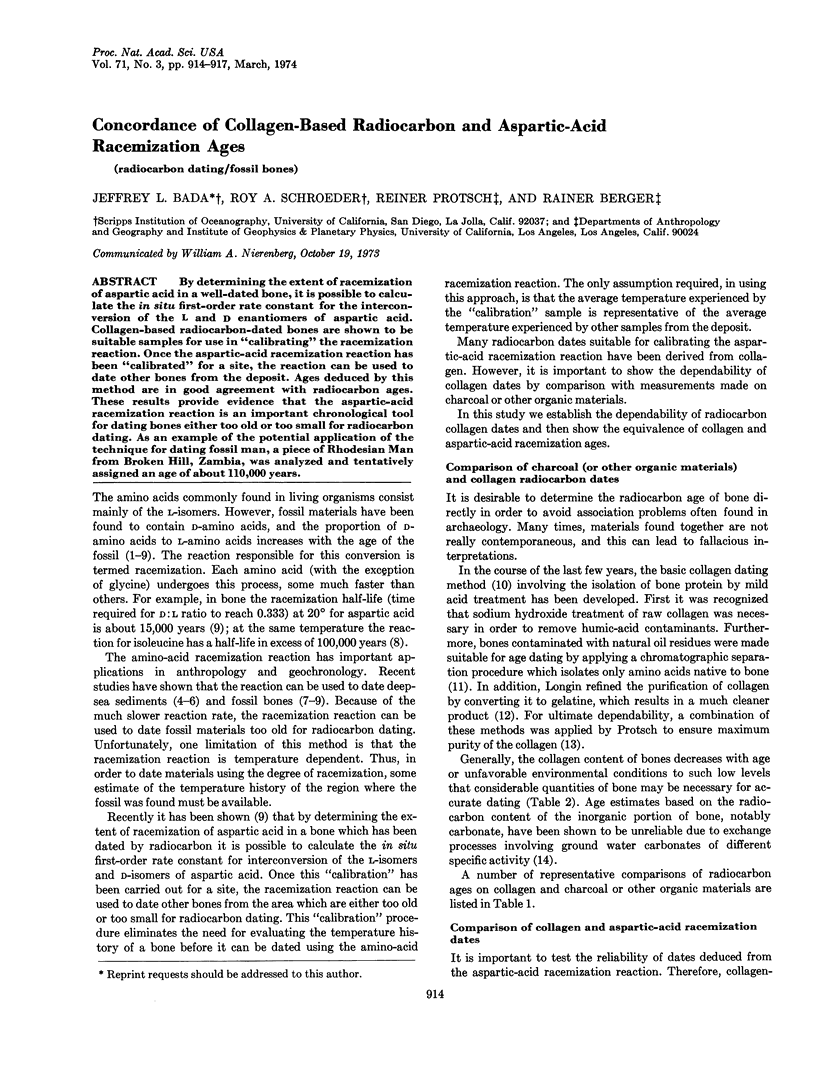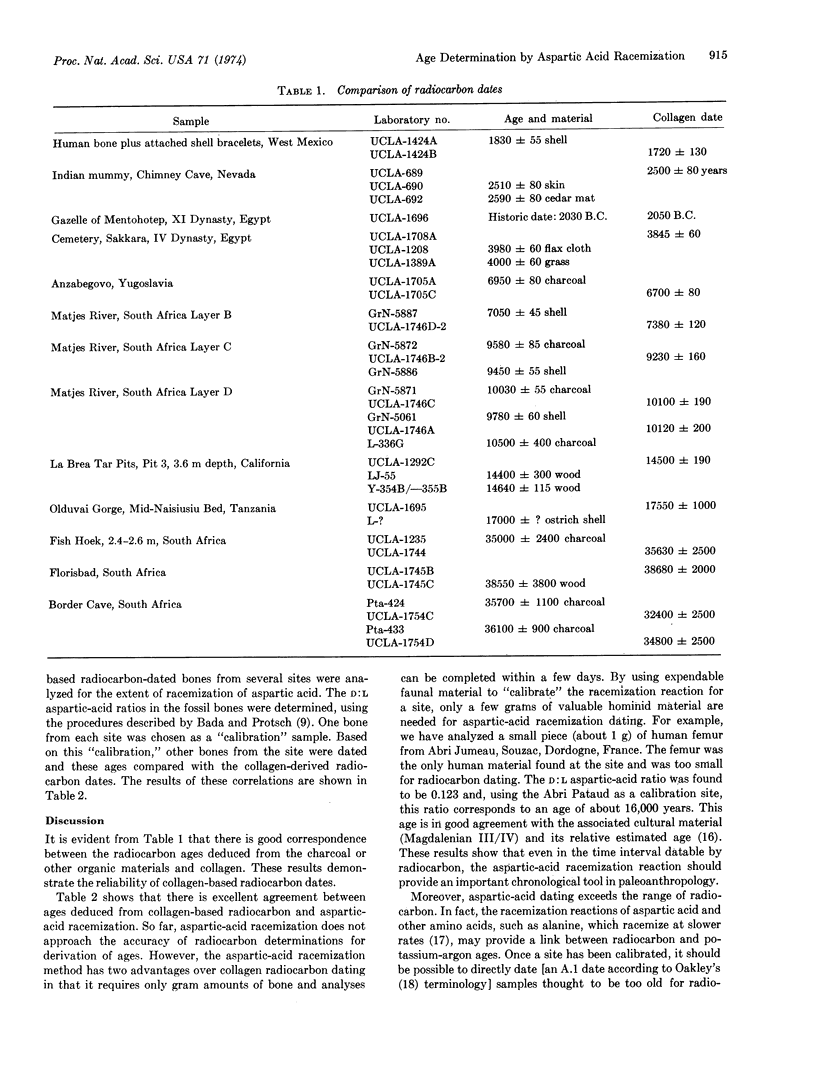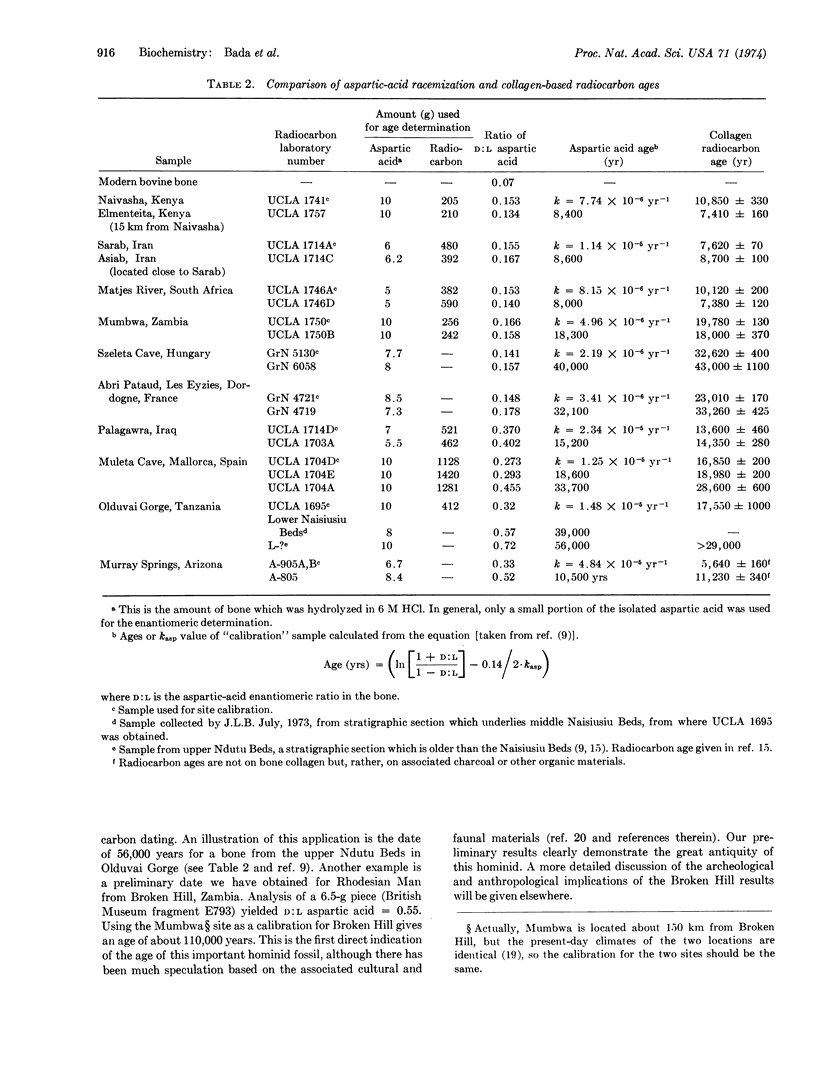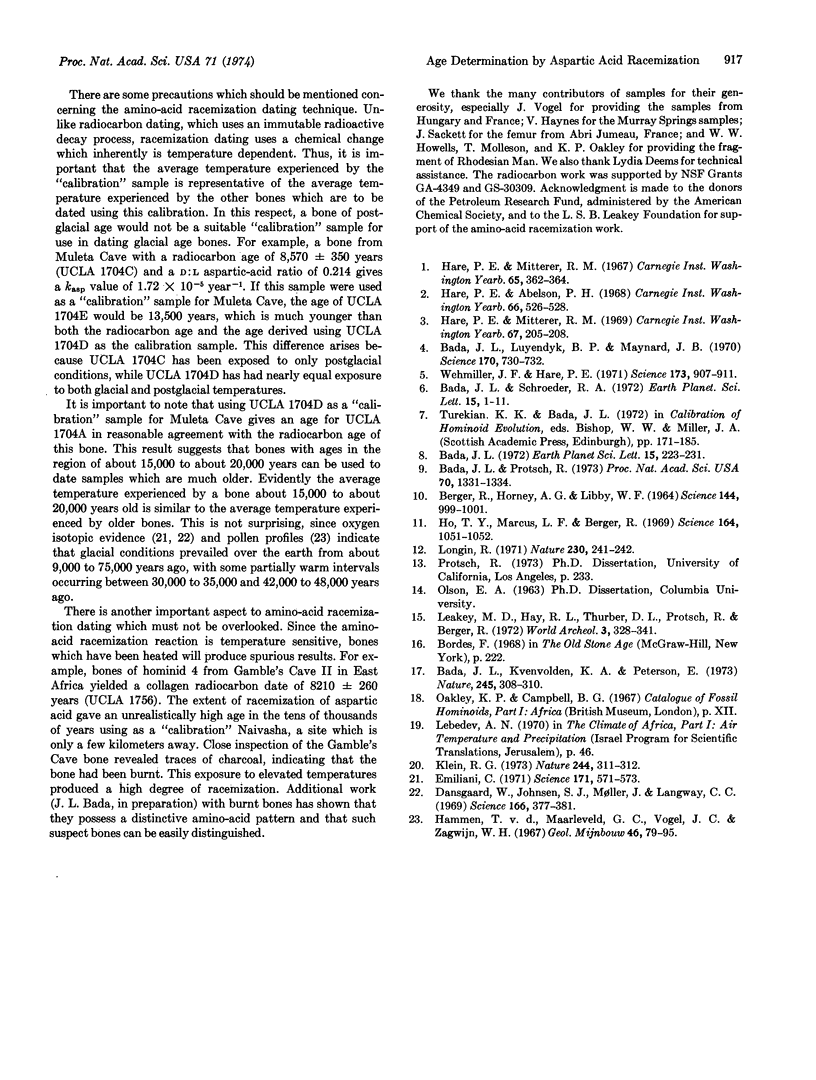Abstract
By determining the extent of racemization of aspartic acid in a well-dated bone, it is possible to calculate the in situ first-order rate constant for the interconversion of the L and D enantiomers of aspartic acid. Collagen-based radiocarbon-dated bones are shown to be suitable samples for use in “calibrating” the racemization reaction. Once the aspartic-acid racemization reaction has been “calibrated” for a site, the reaction can be used to date other bones from the deposit. Ages deduced by this method are in good agreement with radiocarbon ages. These results provide evidence that the aspartic-acid racemization reaction is an important chronological tool for dating bones either too old or too small for radiocarbon dating. As an example of the potential application of the technique for dating fossil man, a piece of Rhodesian Man from Broken Hill, Zambia, was analyzed and tentatively assigned an age of about 110,000 years.
Keywords: radiocarbon dating, fossil bones
Full text
PDF



Selected References
These references are in PubMed. This may not be the complete list of references from this article.
- Bada J. L., Luyendyk B. P., Maynard J. B. Marine sediments: dating by the racemization of amino acids. Science. 1970 Nov 13;170(3959):730–732. doi: 10.1126/science.170.3959.730. [DOI] [PubMed] [Google Scholar]
- Bada J. L., Protsch R. Racemization reaction of aspartic Acid and its use in dating fossil bones. Proc Natl Acad Sci U S A. 1973 May;70(5):1331–1334. doi: 10.1073/pnas.70.5.1331. [DOI] [PMC free article] [PubMed] [Google Scholar]
- Berger R., Horney A. G., Libby W. F. Radiocarbon Dating of Bone and Shell from Their Organic Components. Science. 1964 May 22;144(3621):995–1001. doi: 10.1126/science.144.3621.995. [DOI] [PubMed] [Google Scholar]
- Dansgaard W., Johnsen S. J., Møller J., Langway C. C., Jr One thousand centuries of climatic record from cAMP century on the greenland ice sheet. Science. 1969 Oct 17;166(3903):377–380. doi: 10.1126/science.166.3903.377. [DOI] [PubMed] [Google Scholar]
- Emiliani C. The last interglacial: paleotemperatures and chronology. Science. 1971 Feb 12;171(3971):571–573. doi: 10.1126/science.171.3971.571. [DOI] [PubMed] [Google Scholar]
- Ho T. Y., Marcus L. F., Berger R. Radiocarbon dating of petroleum-impregnated bone from tar pits at Rancho La Brea, California. Science. 1969 May 30;164(3883):1051–1052. doi: 10.1126/science.164.3883.1051. [DOI] [PubMed] [Google Scholar]
- Klein R. G. Geological antiquity of Rhodesian man. Nature. 1973 Aug 3;244(5414):311–312. doi: 10.1038/244311c0. [DOI] [PubMed] [Google Scholar]
- Longin R. New method of collagen extraction for radiocarbon dating. Nature. 1971 Mar 26;230(5291):241–242. doi: 10.1038/230241a0. [DOI] [PubMed] [Google Scholar]
- Wehmiller J., Hare P. E. Racemization of amino acids in marine sediments. Science. 1971 Sep 3;173(4000):907–911. doi: 10.1126/science.173.4000.907. [DOI] [PubMed] [Google Scholar]


